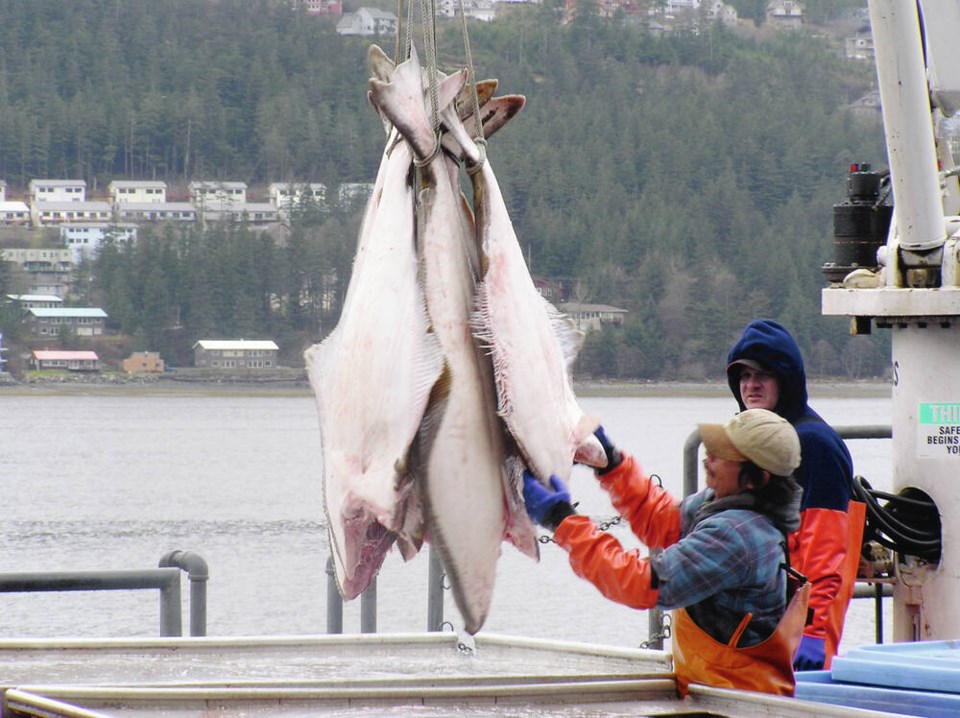On March 10, the 2023 wild Pacific halibut fishing season opens. Fishers licensed accordingly will be able to harvest the white-fleshed groundfish from Bering Strait to California until early December.
That there is a halibut season at all on this coast is due to an agreement signed a century ago between the U.S. and Canada.
The 1923 Convention between Canada and the United States of America for the Preservation of the Pacific Halibut Fishery of the Northern Pacific Ocean and Bering Sea, also known as the Halibut Treaty of 1923, is the first environmental treaty designed to conserve ocean stocks of a fish.
It is also the first treaty the Canadian government negotiated and signed independently.
When Canada became a nation in 1867, Britain’s Parliament retained the ability to consent, repeal and override laws passed by Canada’s Parliament and to create laws that applied to Canada. In addition, Britain negotiated international treaties involving Canada and signed the resulting agreements.
But in the early 20th century, the apron strings tying Canada to Mother England were fraying. What began during the First World War, when then-Prime Minister Robert Borden insisted that Canadian military personnel fighting overseas remain with the Canadian Expeditionary Force, continued when Canada represented itself at the 1919 Paris Peace Conference, signed the Treaty of Versailles on its own behalf, and was a recognized member of the League of Nations.
Negotiations with the U.S. to conserve halibut stocks along the Pacific coast began in 1918. Despite Britain wanting to take part, Canada chose to negotiate the treaty on its own, arguing that the matter concerned only Canada and the U.S.
Halibut were in steep decline at the time. Atlantic stocks of the popular fish had been fished out, and thanks to railways reaching the Pacific coast in the 1880s, improved handling methods and falling rail-transport rates, demand for Pacific halibut — and the ability to satisfy it — increased.
Steam- and then gas-powered fishing boats, introduced in the 1910s, further changed the halibut landscape in the west. These vessels shifted the halibut fishery to distant and pristine offshore fishing banks, allowing fish caught up and down the coast to be moved quickly to rail ports.
By 1915, the annual Pacific catch was more than 69 million pounds. However, it was clear overfishing was depleting stocks, and the annual catch began to decline.
Canada proposed a treaty in 1922 that included a seasonal closure to commercial halibut fishing from November to February, with penalties, including seizure, for those caught fishing during the closure.
In 1923, the U.S. Congress ratified the treaty.
Canada insisted on signing the agreement without Britain’s ratification. As expected, Britain was unhappy about this, argued it was illegal — it likely was — and refused to accept the treaty. It was only when then-PM William Lyon Mackenzie King threatened to send an independent Canadian diplomatic representative to Washington to sign the agreement that Britain backed down.
Canada’s insubordination led to further increases in independence. The 1926 Balfour Declaration recognized that dominions like Canada were “autonomous communities within the British Empire, equal in status, in no way subordinate.” The 1931 Statute of Westminster removed Britain’s powers to pass laws that applied to former colonies.
All that happened because a popular species of groundfish was being overfished.
The Halibut Treaty has since been updated several times, and the wild Pacific halibut fishery is now considered one of the best-monitored and -managed fisheries.
Every halibut harvested is accounted for. Fishing locations are tracked by GPS. Fishers must maintain detailed logs of what is caught and released.
Onboard video cameras or observers record each fish taken and any bycatch species that can count towards each boat’s total quota if not released alive. In addition, government-approved observers record the fish landed dockside, and each halibut is tagged. Research vessels also collect data for stock assessment surveys.
That information is compiled and analyzed to determine the state of the Pacific stocks and to set quotas for the coming fishing seasons.
This year, B.C.’s share of the total allowable catch along the coast is 5.03 million pounds (2.28 million kilograms), down from 5.7 million pounds last year.
The total Pacific halibut removals were cut by 10.31 per cent to 36.97 million pounds (16.77 million kg) for all users. That includes takes by commercial, sport, subsistence fishermen and halibut caught and discarded as bycatch in eight halibut-fishing regions along the coast, from California to Alaska.
>>> To comment on this article, write a letter to the editor: [email protected]



